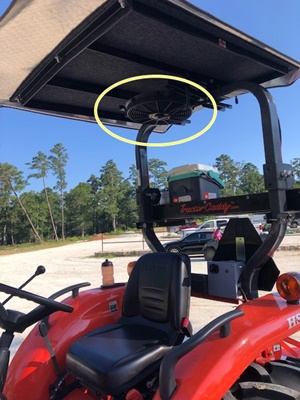Parts list:
General Notes:
- All wire is 12 gauge (rated for 30 amps). Be sure to use good quality wire, there is cheap wire advertised as 12 gauge that is thinner.
- Use SXL automotive wire (rated for 125C/257F) through the engine compartment to the control box.
- Keep wires away from the exhaust manifold.
- Use HDT wire (rated for abrasion) for rest of harness.
- Install a 30 amp inline fuse close to battery on the positive wire.
- Use minimum of 30 amp rated relay, used to turn fan off when tractor key is off.
- Fan is a 14" radiator cooling fan, 12v 90W (pulls 7.5 amps).
- Confirm fan turns in the correct direction. May need to swap wires or flip the blade.
- Fan switch is sealed and rated for 30 amps.
- Use Scotch Super 33+ electrical tape.
|
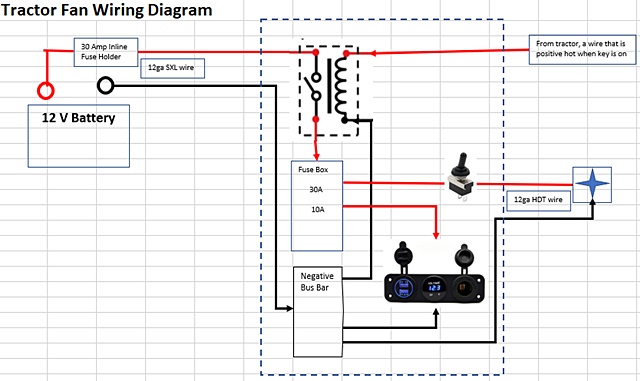
|
Starting at the battery:
Positive wire (red): A round lug is crimped then soldered to the 12 gauge SXL automotive wire, then the connection has shrink wrap applied. Use the correct lug size for the battery bolt. The positive wire goes into an in-line fuse holder with a 30 amp fuse. The red wire coming out of the in-line fuse goes into the wire loom and back to the control box.
Negative wire (black): Identical to the positive wire except no in-line fuse. |
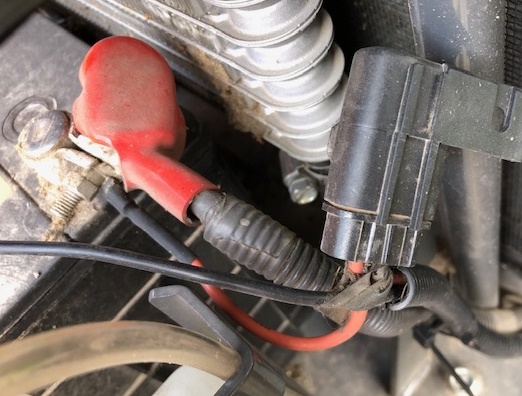
|
This is the wire loom weaving it's way with the 12 gauge positive and negative wires from the battery, back to the Control Box, located on the roll-over protection bar behind the Operator.
Be sure to keep this away from the exhaust manifold. And any other engine components that get hot.
Route it out of the way so a boot does not catch it accidently. |
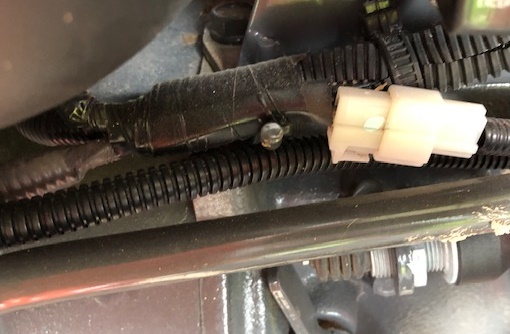 |
On the way up to the control box, the "positive hot" wire is picked up. This is used to power on the relay when the key is on.
On my Kubota L2501, there is an extra connection under the left fender just for this sort of thing. Thank you Kubota! |
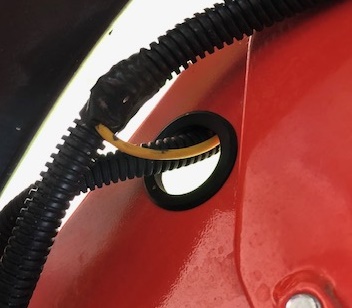 |
The control box, a 6"x6"x4" deep plastic enclosure from Home Depot.
It's a little big, but has plenty of room inside to fit everything and to mount controls on the front.
Inside are:
- Relay
- Negative bus
- Fuse block
The switch is pretty long, makes it easy to reach back and turn on/off with gloves on.
Note the fan power goes through the switch, versus triggering a fan relay on/off. So be sure to use a 30 amp rated weatherproof switch.
The fuse block has four fuses. I've used two so far, have two spaces remaining.
May have a horn or backup beeper some day.
Power to the fan exits the control box and is cable tied to the ROP bar, up to the fan.
I mounted the box to a horizontal bar the toolbox was on, just moved the toolbox to make room.
|
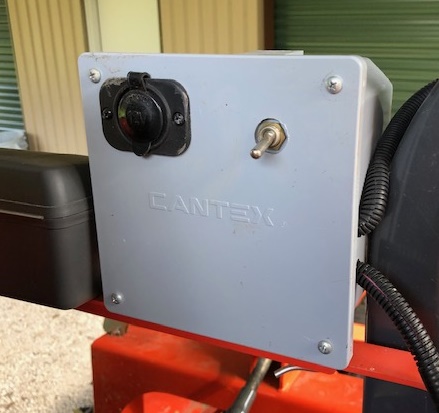 |
The fan is attached to the canopy frame. I used a single hanging strap on each side so I can point the fan at me.
Be sure to use lock nuts, with the plastic ring inside. Don't want the fan to fall off and hit you. It does tend to rattle loose
I have seen designs with a filter of some kind on top of the fan. It's a good idea, the fan picks up some dust and leaves. But I did not incorporate a filter into this design. |
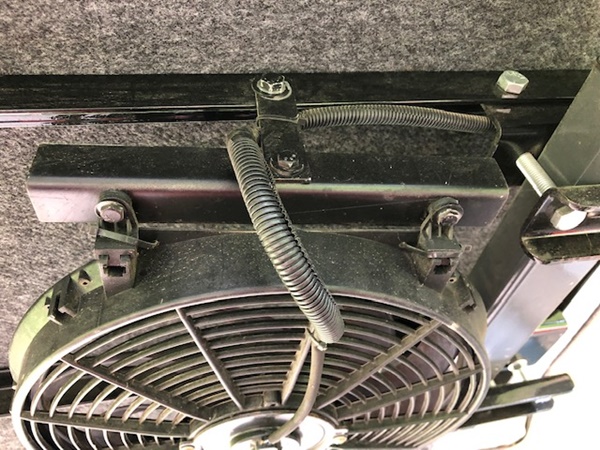 |
